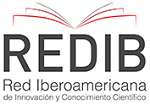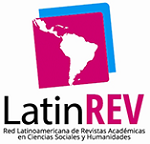Rankings analysis with the Optimized Pareto method.
DOI:
https://doi.org/10.15649/2346030X.852Palabras clave:
Multi-objective optimization, linearization, Pareto, ranking.Resumen
Rankings compare the performance of organizations. In many cases, rankings provide a good assessment of successful organizations. However, rankings often generate controversy and debate since they support the making decisions. A ranking is a weighted linear combination of indicators, and the weights assigned to each of the indicators can lead to different rank orders. In most cases, rankings are used as a tool to support making decisions, such as resource allocation; therefore, these decisions can be affected by the assignment of such weights. In this article, we analyze the behavior of a ranking and the weights; simulations are used to calculate the change in the order of the equally weighted ranking and of the randomly weighted ranking. In this regard, we present a discussion and ranking design alternatives.
Referencias
P. Macmillan y I. Smith, “Explaining International Soccer Rankings,” J. Sports Econom., vol. 8, no. 2, pp. 202–213, 2007.
O. Kaltmeier and M. Breuer, “Social inequality,” Routledge Handb. to Polit. Econ. Gov. Am., 2020.
T. Luque-Martínez y N. Faraoni, “Meta-ranking to position world universities,” Stud. High. Educ., vol. 45, no. 4, pp. 819–833, 2020.
A.R. Bradley, Z. Manna y H. B. Sipma, “Linear Ranking with Reachability,” in Computer Aided Verification, 2005, pp. 491–504.
B.P.G. Altbach, “Views The State of the Rankings,” pp. 11–14, 2010.
A. Rauhvargers, Global University Rankings and Their Impact. 2011.
P.G. Altbach, “The State of the Rankings,” The inside highered, pp. 11–14, 11-Nov-2011.
F. Wilcoxon, “Individual Comparisons by Ranking Methods,” pp. 196–202, 1992.
L. Waltman, “A review of the literature on citation impact indicators,” J. Informetr., vol. 10, no. 2, pp. 365–391, 2016.
A.F.J. Van-Raan, T.N. Van-Leeuwen, M.S. Visser, N.J. Van Eck y L. Waltman, “Rivals for the crown: Reply to Opthof and Leydesdorff,” J. Informetr., vol. 4, no. 3, pp. 431–435, 2010.
N.K. Jajo y J. Harrison, “World university ranking systems: an alternative approach using partial least squares path modelling,” J. High. Educ. Policy Manag., vol. 36, no. 5, pp. 471–482, 2014.
E. Triperina, C. Sgouropoulou, I. Xydas, O. Terraz y G. Miaoulis, “Assessing the performance of educational institutions: A multidimensional approach,” IEEE Glob. Eng. Educ. Conf. EDUCON, pp. 1337–1344, 2017.
M. Erdoğan y İ. Kaya, “A type-2 fuzzy MCDM method for ranking private universities in İstanbul,” Proc. World Congr. Eng. (Vol. 1, pp. 2-4)., vol. 1, pp. 2–4, 2014.
E. Celik, M. Gul, N. Aydin, A. T. Gumus y A. F. Guneri, “A comprehensive review of multi criteria decision making approaches based on interval type-2 fuzzy sets,” Knowledge-Based Syst., vol. 85, pp. 329–341, 2015.
G. Martin, S. Siebert y I. Robson, “Conformist innovation: An institutional logics perspective on how HR executives construct business school reputations,” Int. J. Hum. Resour. Manag., Oct. 2016.
D. Pyne, “The rewards of predatory publications at a small business school,” J. Sch. Publ., vol. 48, no. 3, pp. 137–160, 2017.
J.I. Pulido-Fernández y B. Rodríguez-Díaz, “Reinterpreting the World Economic Forum’s global tourism competitiveness index,” Tour. Manag. Perspect., vol. 20, pp. 131–140, 2016.
R.P. Curiel y S.R. Bishop, “A metric of the difference between perception of security and victimisation rates,” Crime Sci., vol. 5, no. 1, 2016.
E. Lora, "The distance between perception and reality in the social domains of life", 2016.
J. Ratcliffe, B. Kaambwa, C. Hutchinson y E. Lancsar, “Empirical Investigation of Ranking vs Best–Worst Scaling Generated Preferences for Attributes of Quality of Life: One and the Same or Differentiable?,” Patient, 2020.
A. Bonaccorsi y T. Cicero, “Nondeterministic ranking of university departments,” J. Informetr., vol. 10, no. 1, pp. 224–237, 2016.
S. Marginson, “University rankings and social science,” Eur. J. Educ., vol. 49, no. 1, pp. 45–59, 2014.
G. Doğan y U. Al, “Is it possible to rank universities using fewer indicators? A study on five international university rankings,” Aslib J. Inf. Manag., vol. 71, no. 1, pp. 18–37, 2019.
D. Ross, “Times higher education world university rankings,” in Research Analytics: Boosting University Productivity and Competitiveness through Scientometrics, CRC Press, 2017, pp. 137–146.
F.L. Bookstein, H. Seidler, M. Fieder y G. Winckler, “Too much noise in the Times Higher Education rankings,” Scientometrics, vol. 85, no. 1, pp. 295–299, 2010.
P. Katerattanakul, B. Han y S. Hong, “Objective quality ranking of computing journals,” Commun. ACM, vol. 46, no. 10, pp. 111–114, 2003.
H. Cousijn, P. Feeney, D. Lowenberg, E. Presani y N. Simons, “Bringing citations and usage metrics together to make data count,” Data Sci. J., vol. 18, no. 1, 2019.
A. Singh, “Enabling Researchers to Make Their Data Count,” SSRN Electron. J., 2019.
N. Pollock, L. D’Adderio, R. Williams y L. Leforestier, “Conforming or transforming? How organizations respond to multiple rankings,” Accounting, Organizations and Society, vol. 64, pp. 55–68, 2018.
C. Spence, “‘Judgement’ versus ‘metrics’ in higher education management,” High. Educ., vol. 77, no. 5, pp. 761–775, 2019.
Y. Sawaragi, H. Nakayama y T. Tanino, Theory of Multiobjective Optimization. Academic Press, 1985.
S. Lozano y L. Calzada-Infante, “Efficiency ranking using dominance network and multiobjective optimization indexes,” Expert Syst. Appl., vol. 126, pp. 83–91, 2019.
R.T. Marler y J.S. Arora, “The weighted sum method for multi-objective optimization: New insights,” Struct. Multidiscip. Optim., vol. 41, no. 6, pp. 853–862, 2010.
A. Konak, D.W. Coit y A.E. Smith, “Multi-objective optimization using genetic algorithms: A tutorial,” Reliab. Eng. Syst. Saf., vol. 91, no. 9, pp. 992–1007, 2006.
G.S. Mahapatra y T.K. Roy, “Fuzzy multi-objective mathematical programming on reliability optimization model,” Appl. Math. Comput., vol. 174, no. 1, pp. 643–659, 2006.
M. Morishima y A.M. Pujana, Teoría económica de la sociedad moderna, 1st ed. Barcelona, España: Antoni Bosch, 1981.
J.M. Lourenco y L. Lebensztajn, “Post-Pareto Optimality Analysis with Sum of Ranking Differences,” IEEE Trans. Magn., vol. 54, no. 8, 2018.
C. Solís y X. Wang, “A study of the characteristics of behaviour driven development,” Proc. - 37th EUROMICRO Conf. Softw. Eng. Adv. Appl. SEAA 2011, pp. 383–387, 2011.
I. Dees, M. Wynne y A. Hellesoy, Cucumber Recipes: Automate Anything with BDD Tools and Techniques. Pragmatic Bookshelf, 2013.
M. de Ciencias, “Convocatoria medición de grupos,” 2020. [En línea]. Disponible en: https://minciencias.gov.co/convocatorias/fortalecimiento-capacidades-para-la-generacion-conocimiento/medicion-grupos. [Accessed: 12-May-2020].
G. Agrawal, K. Lewis, K. Chugh, C.H. Huang, S. Parashar y C. L. Bloebaum, “Intuitive visualization of Pareto Frontier for multi-objective optimization in n-dimensional performance space,” Collect. Tech. Pap. - 10th AIAA/ISSMO Multidiscip. Anal. Optim. Conf., vol. 3, pp. 1523–1533, 2004.
Descargas
Publicado
Cómo citar
Descargas
Número
Sección
Licencia
La revista ofrece acceso abierto bajo una Licencia Creative Commons Attibution License

Esta obra está bajo una licencia Creative Commons Attribution (CC BY 4.0).









